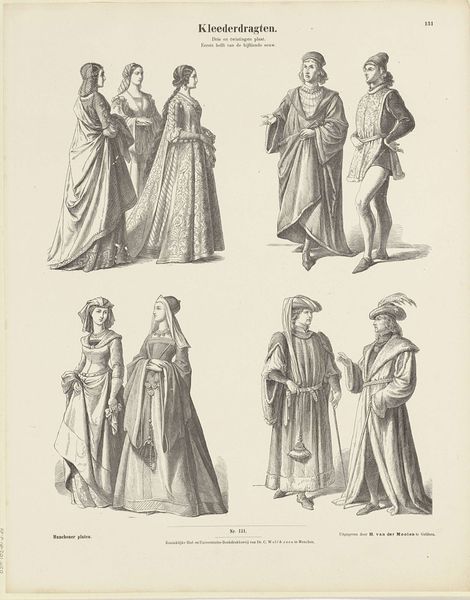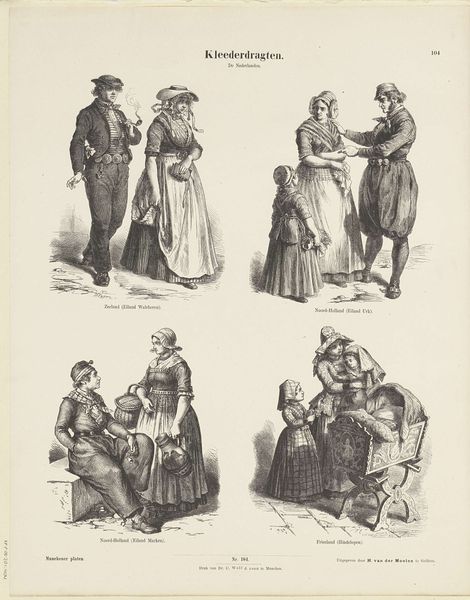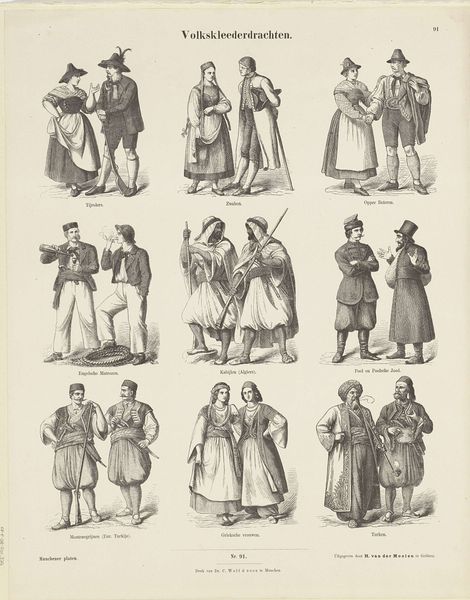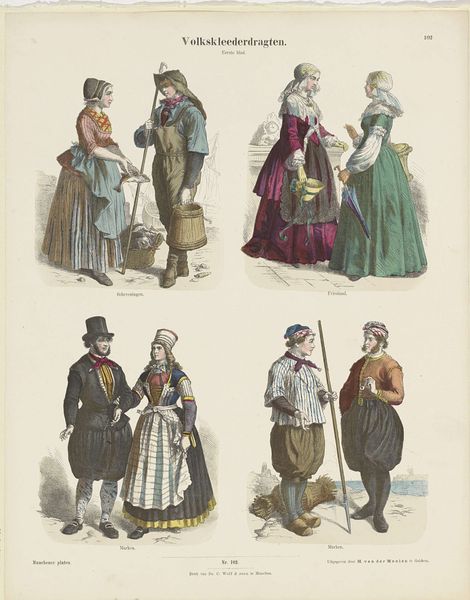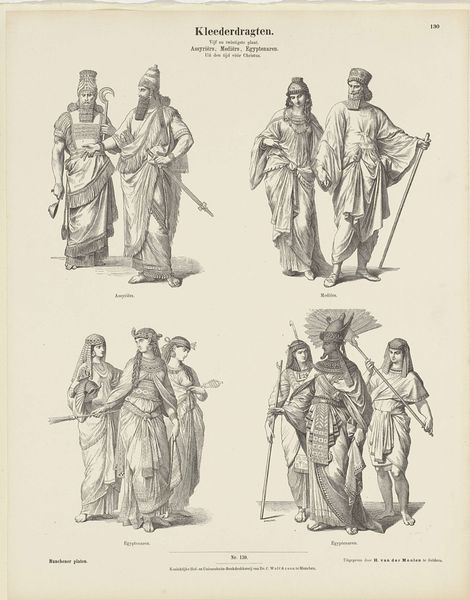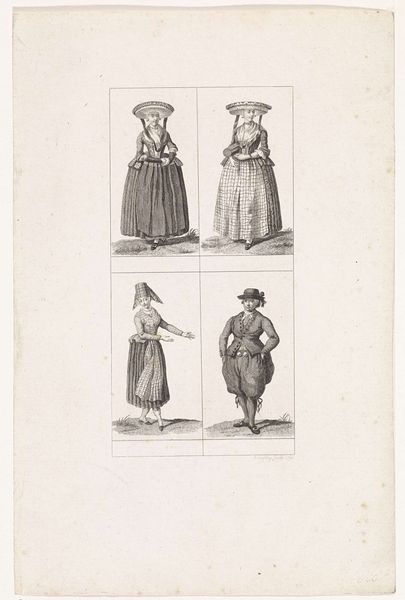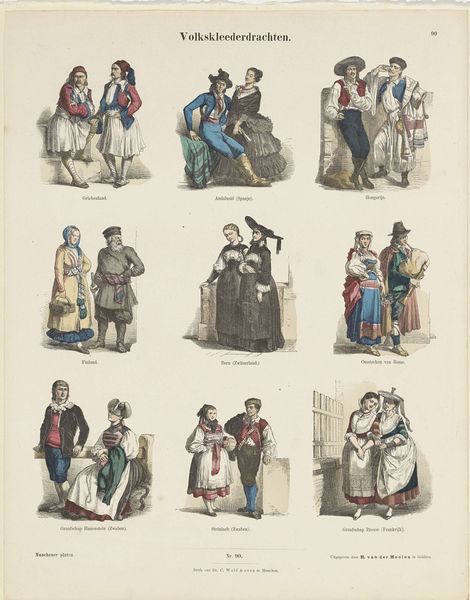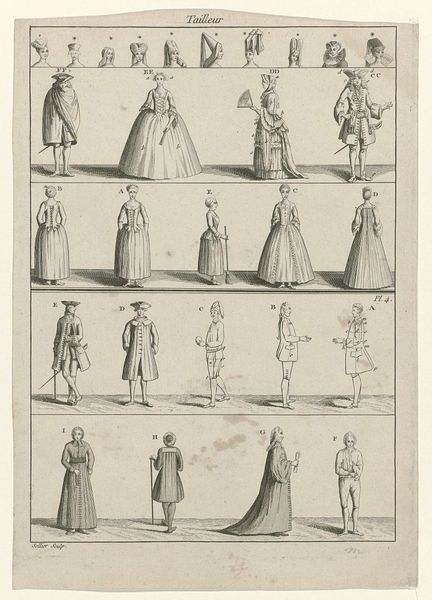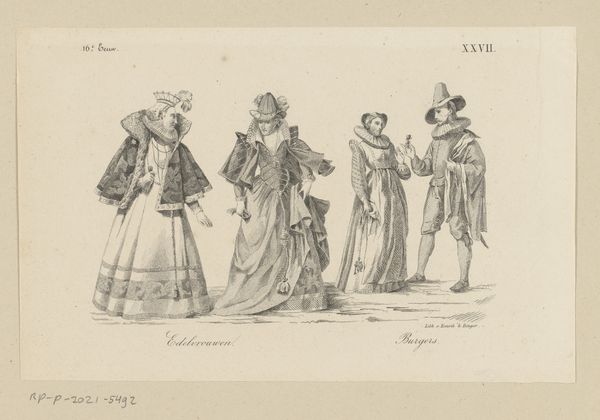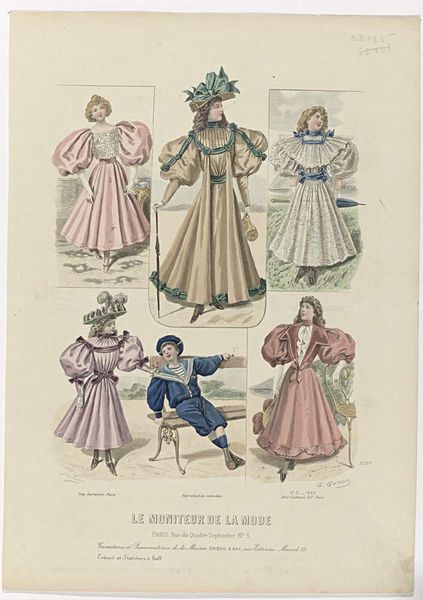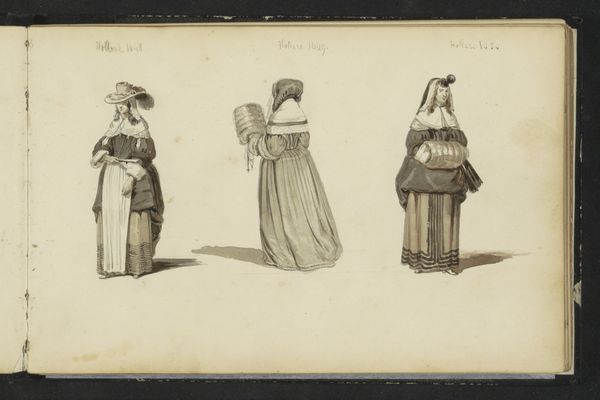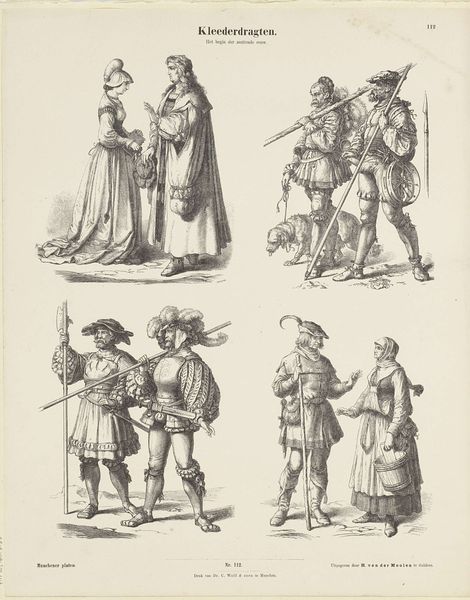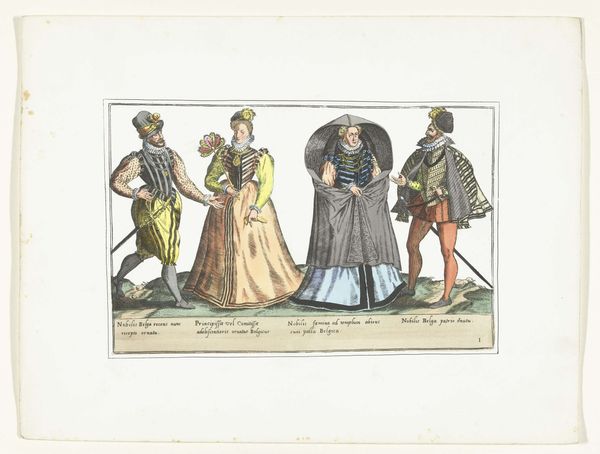
graphic-art, print, engraving
#
portrait
#
graphic-art
#
imaginative character sketch
#
light pencil work
#
quirky sketch
# print
#
pencil sketch
#
figuration
#
personal sketchbook
#
idea generation sketch
#
sketchwork
#
line
#
sketchbook drawing
#
genre-painting
#
history-painting
#
storyboard and sketchbook work
#
sketchbook art
#
engraving
Dimensions: height 443 mm, width 350 mm
Copyright: Rijks Museum: Open Domain
Curator: Ernst Fröhlich’s "Kleederdragten / Het begin der zestiende eeuw," which roughly translates to "Clothing / The Beginning of the Sixteenth Century," is a print made sometime between 1843 and 1920. Immediately, I'm struck by its antiquated air. Editor: There’s a kind of melancholic charm to it. It feels like peering into a bygone era, almost dreamlike in its execution. The figures, presented in these period costumes, exude a somber, contemplative mood. But what were Fröhlich’s sources and processes here? Curator: It appears to be an engraving, a process deeply rooted in labor, isn’t it? Think of the craftsmanship demanded by the printmaking techniques. Each line etched meticulously into the plate… that translates to so many skilled hours. The labor inherent is staggering to consider. Editor: Yes, I completely agree. You can sense that commitment and that brings an earthy sense of the material here. But consider also how those materials contribute to the overall feel – the way the ink sits on the page creates a tactile depth that modern printing methods often lack. Does it draw you in as a reader or viewer? Curator: Well, it almost takes you back to a dusty library, the kind where you might stumble upon long-forgotten secrets hidden between the pages. There's a romantic element to seeing representations of garments from the past, a sort of visual time-traveling. Editor: Exactly! And the print itself becomes a kind of historical document, speaking to shifts in labor practices, social hierarchies reflected in clothing. We are not only dealing with art here but we also have history lessons in process and material embedded within! Curator: Yes, a slice of life painstakingly rendered and brought to us to ponder today, bridging centuries. You have changed my perception on the piece - I feel a responsibility to connect the past through these clothes in history. Thank you! Editor: And for me too! It’s in these thoughtful renderings where, maybe, the past truly meets the present, don’t you agree?
Comments
No comments
Be the first to comment and join the conversation on the ultimate creative platform.
